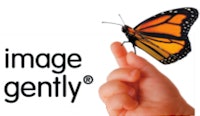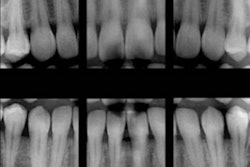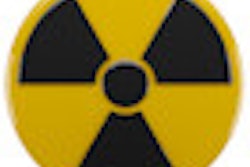
There is no doubt that radiographs help dentists care for children. However, when we image, radiation dose does matter. Children are more sensitive to ionizing radiation than are adults, and what we do now lasts their lifetime. So when we image children, let's "Image Gently!"
 Image courtesy of the Alliance for Radiation Safety in Pediatric Imaging.
Image courtesy of the Alliance for Radiation Safety in Pediatric Imaging.This is the message that the new Image Gently in Dentistry campaign will launch this September. The campaign is supported by the Alliance for Radiation Safety in Pediatric Imaging, a coalition of healthcare organizations dedicated to providing safe, high-quality pediatric imaging worldwide. The primary objective of the alliance is to raise awareness in the imaging community of the need to adjust radiation dose when imaging children.
Guidelines for Imaging Gently in Dentistry when x-rays are necessary include the following:
“Radiograph selection should be based on professional judgment ... following history taking and a thorough clinical inspection of the patient.”
Select x-rays for individual needs, not merely as a routine. Radiograph selection should be based upon professional judgment of the dentist following history taking and a thorough clinical inspection of the patient. They should only be made when they are essential for diagnosis or treatment. If the proximal surfaces of the teeth can be inspected visually, there is no need for bitewing radiographs.
Use the fastest image receptor available. When film is used for intraoral radiography, it should be F-speed. When digital imaging is applied, the exposure parameters should be set as low as diagnostically necessary.
Collimate beam to area of interest. For intraoral radiography, collimation should be rectangular to match the recording area of the detector. For extraoral radiography, including cone-beam CT (CBCT), the beam should be restricted to the volume that needs to be exposed for the diagnosis.
Always use thyroid collars. The thyroid gland in children is particularly sensitive to radiation. Use of a thyroid shield reduces dose to this sensitive organ by 50%.
Child-size the exposure time. The exposure time needed is less for children than for adults as the tissues are smaller in size.
Use cone-beam CT only when necessary. CBCT should be restricted in children to cases in which it is essential for diagnosis and treatment planning. It should not be used merely as a substitute impression method.
Use professional judgment to image wisely and image gently!
The Alliance for Radiation Safety in Pediatric Imaging was founded by the Society for Pediatric Radiology, the American College of Radiology, the American Society of Radiologic Technologists, and the American Association of Physicists in Medicine, and first developed the Image Gently campaign in 2007. Today, the alliance encompasses 84 international dental and medical organizations.
Allan Farman, BDS, PhD, EdS, MBA, DSc, is a diplomate of the American Board of Oral and Maxillofacial Radiology and a professor of radiology and imaging science in the department of surgical and hospital dentistry at the University of Louisville School of Dentistry.
The comments and observations expressed herein do not necessarily reflect the opinions of DrBicuspid.com, nor should they be construed as an endorsement or admonishment of any particular idea, vendor, or organization.



















